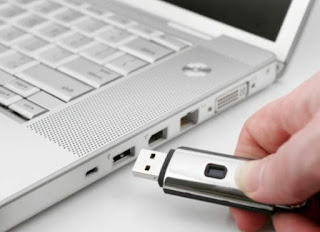
Format For Windows And Mac Usb Exfat
When you work (or live) in an environment that consists of both Mac and Windows computers, it becomes a constant headache negotiating the different filesystems and their compatibility. First, there is the lack of NTFS write capability on Mac’s. Then there is the inability to write files greater than 4gb on Fat32 and of course the complete lack of support on Windows for a Mac drive formatted with HFS+.
Most WD Drives come formatted in the NTFS (Windows) or HFS+ (Mac) format. For a hard drive to be able to be read and written to in both a PC and Mac computer, it must be formatted to ExFAT or FAT32 file format. FAT32 has several limitations, including a 4 GB per-file limit. How to format a USB drive on a Windows PC. Formatting a USB drive in Windows is normally very easy, here's how it is done. Open Windows Explorer and simply right-click on the disk.
There are two answers. One is to use a paid 3rd party tool to add NTFS write support to a Mac, such as tool.
The other is to format your drives with the exFAT file system. This file system can be read and written by both Mac and Windows with support for single files of up to 128 petabytes!
Even better, it’s freely included in both operating systems. A drive can be formatted with exFAT using either a Windows or a Mac computer. From what I understand, Windows doesn’t always like the way Mac’s do the formatting on some larger drives, though, so give it a try and if your Windows machines don’t like it, just format the drive with Windows. If you need to be sure without the time to test it, it is best to do the formatting on Windows since there don’t appear to be any compatibility problems that way. So how do you do it? First, make sure anything important from the drive has been backed up. You don’t want to accidentally lose it when you format the drive.
Windows • Right click on the external drive in “My Computer”, and then click “Format”. • In the “File System” drop-down select “exFAT”. • Click “Start”. Select ExFAT when formatting an external drive with Windows. Mac (OS X Sierra) • Open Disk Utility and click the drive you want to format. • Click “Erase” and from the “Format” drop-down select “ExFAT”.
• Click “Erase”. Select ExFAT when formatting an external drive in Mac OS X Sierra. Both operating systems will go through and setup the file system on the drive. Once complete you can close the dialogue windows. Now you are all ready to go.
By - guest writer. The latest trend with computers is not including a CD/DVD drive. This helps the computers to be small and lighter. Apple has started doing this when the Macbook Air arrived on the scene. They have also included this with their latest laptops and their iMac’s.
Recently photographers have switched from using CD/DVD’s to USB flash drives to deliver their digital pictures to their clients. However, some photographers have run into issues where clients are not able to read the USB flash drive, prompting the photographer to switch back to using CD/DVD’s.
Cook the most delicious food and meals in the whole city, and take control over this business area. That's why customer's satisfaction should be your priority number one!  New ideas bring new opportunities and customers generally like that things! Don't be worried about experimenting a little bit and discover completely new recipes which will crush your competitors! Keep that in mind and success will come!
New ideas bring new opportunities and customers generally like that things! Don't be worried about experimenting a little bit and discover completely new recipes which will crush your competitors! Keep that in mind and success will come!
But don't worry. We've got the solution! This article will teach you how to format the USB flash drive so both Mac’s and PC’s can read them. There are two parts to this tutorial. One for Mac and the other for Windows 7. (Be careful using these instructions to ensure you are formatting the correct disk.) (for Windows instructions please scroll down) MAC INSTRUCTIONS Step 1: Double Click on the Finder icon that is located in the Dock.
It looks like the Apple smiley face. Here’s a picture. Step 2: A finder window should be open now. On the left hand side of the finder window locate “Applications”. Click on Applications to open the Applications folder.. Step 3: In the Application Windows look for the Utilities Folder. Double click on the Utilities folder.
Step 4: If you haven’t already plugged in your USB flash drive in to your Mac, please do so now before going on to Step 5. Step 5: Look for the Disk Utility icon and double click it. Note: From this step on please be careful. You don’t want to erase the wrong disk. Doing this will delete all the data on the disk.